How is an OAM generated? What is the potential of OAM generators on the market?

In a previous article, we defined OAM (Orbital Angular Momentum) waves and looked at their properties. In this article, we will focus on OAM generators and compare some options available on the market today.
Generally, the method consists of changing the shape of a Gaussian beam by applying a helical phase object to it. Several techniques can be used to achieve this.
Cylindrical lens:
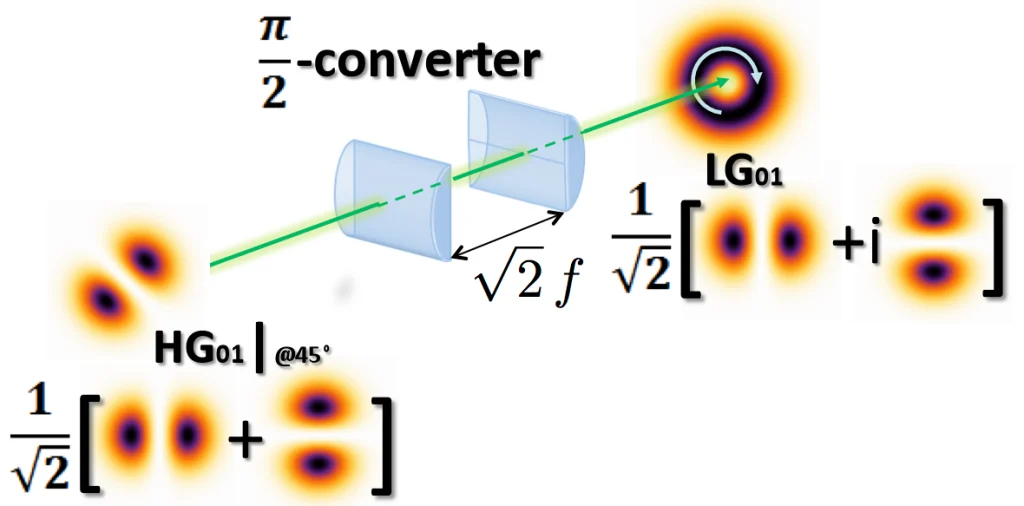
This was the first method used to generate OAM waves. It consists of converting a Hermite-Gaussian (HG) beam into Laguerre-Gaussian (LG) input modes using two cylindrical lenses. Each series of HG modes undergoes several successive phase transformations to form an LG mode. This mathematical and optical decomposition generates beams of excellent output quality provided that the optical elements are perfectly aligned. Unfortunately, this method is particularly difficult to implement since it requires a good HG mode generator.
Spiral phase plate:
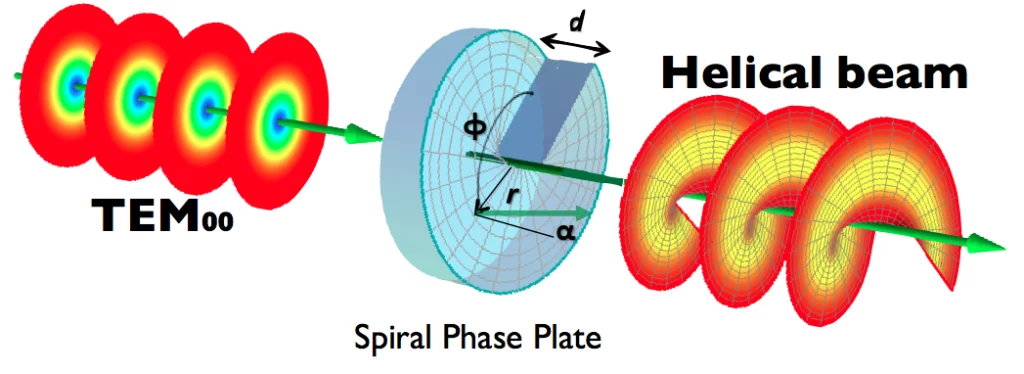
A light beam can acquire OAM by crossing a spiral phase plate of inhomogeneous thickness. The phase plate creates a vortex beam whose shape and characteristics are directly dependent on the shape of the phase plate. The higher the topological charge (i.e. the number of helices), the greater the difference in height between the start and the end of the spiral. Unfortunately, each plate is only able to generate one type of output twisted beam and thus one type of OAM.
Phase hologram:

Using a diffraction network, it is possible to generate an OAM by regularly alternating constructive and destructive interference. This interference pattern is called a hologram. A phase hologram imprinted on a transparent medium that generates the OAM of a wave appears as a “fork” hologram.
The quality of the OAM formed by this type of element is acceptable when forming small order OAMs. However the beam quality tends to deteriorate sharply for larger order OAMs. This is because the beam order is directly proportional to the interference frequency.
This limits the ability to produce very fine, high-resolution holograms. Moreover, in energy terms, once illuminated this type of network generates three output beams of which only one can be used.
Metamaterials:
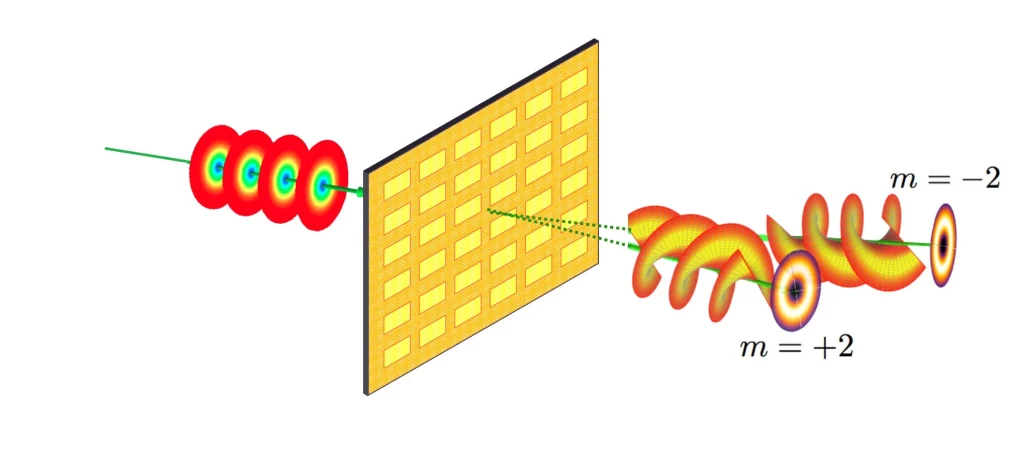
Metamaterials are composite materials that have electromagnetic properties not found in naturally occurring materials.
Research has shown that an ultra-thin metamaterial can change the phase of an incident beam to obtain an OAM. Work on metamaterials is relatively new for this technology, which is not sufficiently mature.
In addition, each metamaterial can only create a single OAM wave, which limits the system’s OAM multiplexing capability. Finally, its structure deflects the input beam, making its integration non-trivial.
Spatial Light Modulator:
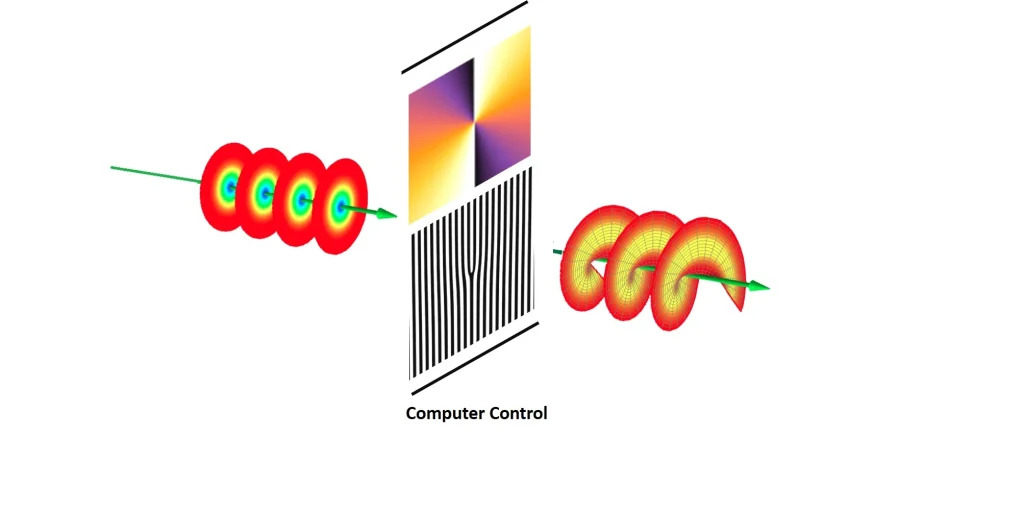
Spatial Light Modulators (SLM) are composed of a pixelated matrix of liquid crystals, whose molecules can be programed to modify the parameters of the incident beam and its phase, creating a twisted beam.
SLMs can thus behave as both a spiral and a fork phase hologram to form OAMs with different configurations. Unfortunately, this type of optical element cannot withstand high-power lasers. Furthermore, it requires computer control and is not a passive technology.
Q-plates:
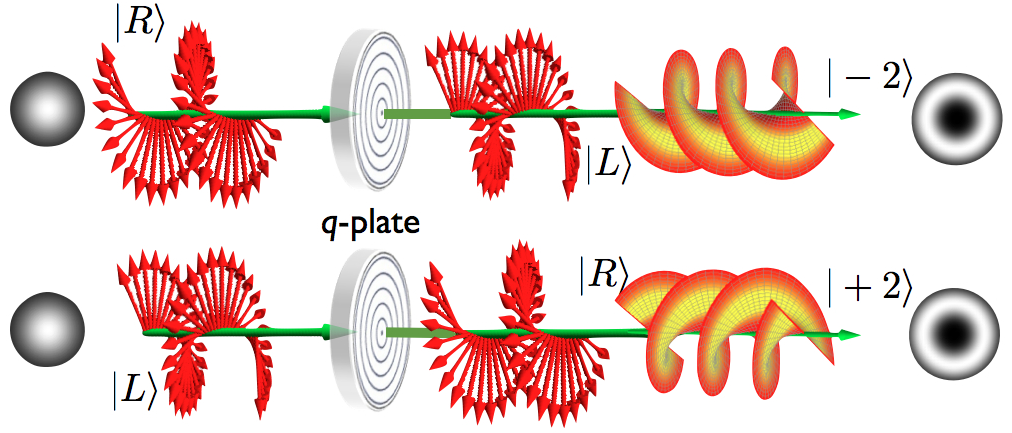
Q-plates, like SLMs, are composed of an anisotropic material which, like phase plates, can transform a circularly polarized Gaussian beam into a twisted beam carrying an OAM. The technological advantage of q-plates is their high conversion efficiency.
Furthermore, unlike holographic methods, they do not deflect the incident beam and can be used over a wide frequency range. Unfortunately, q-plates can usually only generate one mode type per model.
Multi Plane Light Conversion (MPLC):
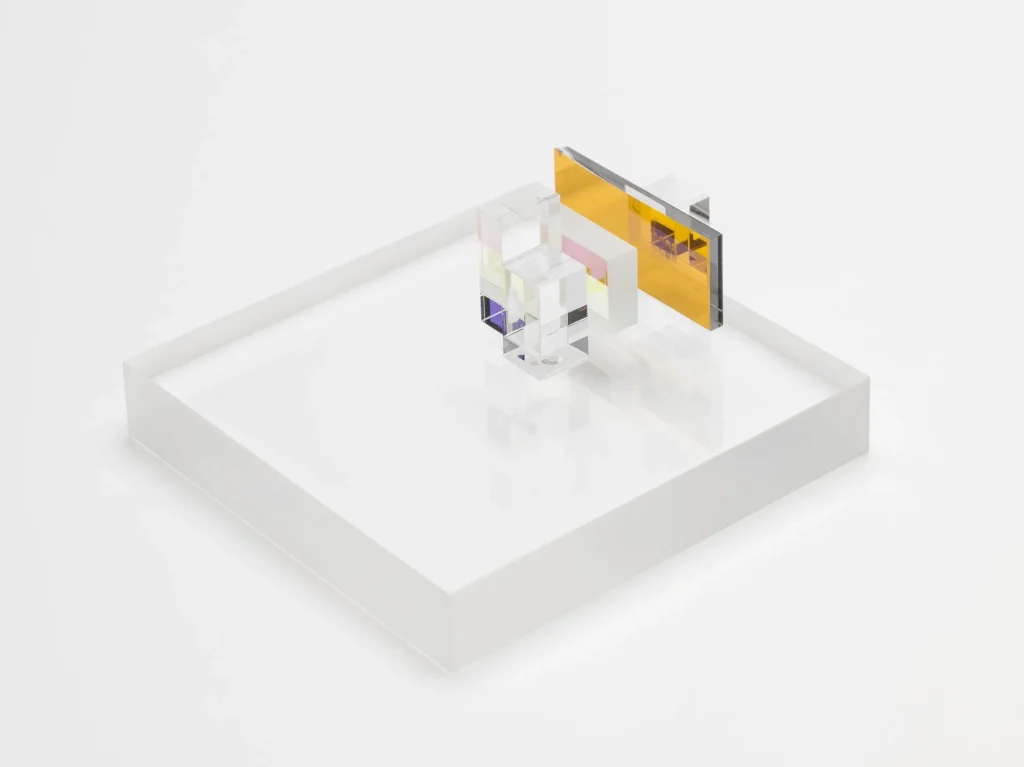
MPLC, by virtue of its reflective technology, is a passive optical process whose principle is derived from quantum optics. It can generate multiple low-loss OAM beams, even at high power, via reflection on textured surfaces followed by free space propagation.
It also enables space division multiplexing (SDM). By injecting N inputs toward an output consisting of N modes, the information can then be decoded by a reverse process that demultiplexes the output information. Through its product, PROTEUS, Cailabs is making this unique component available to research teams in the field of OAM.
The infographic below summarizes and compares all of these technologies.
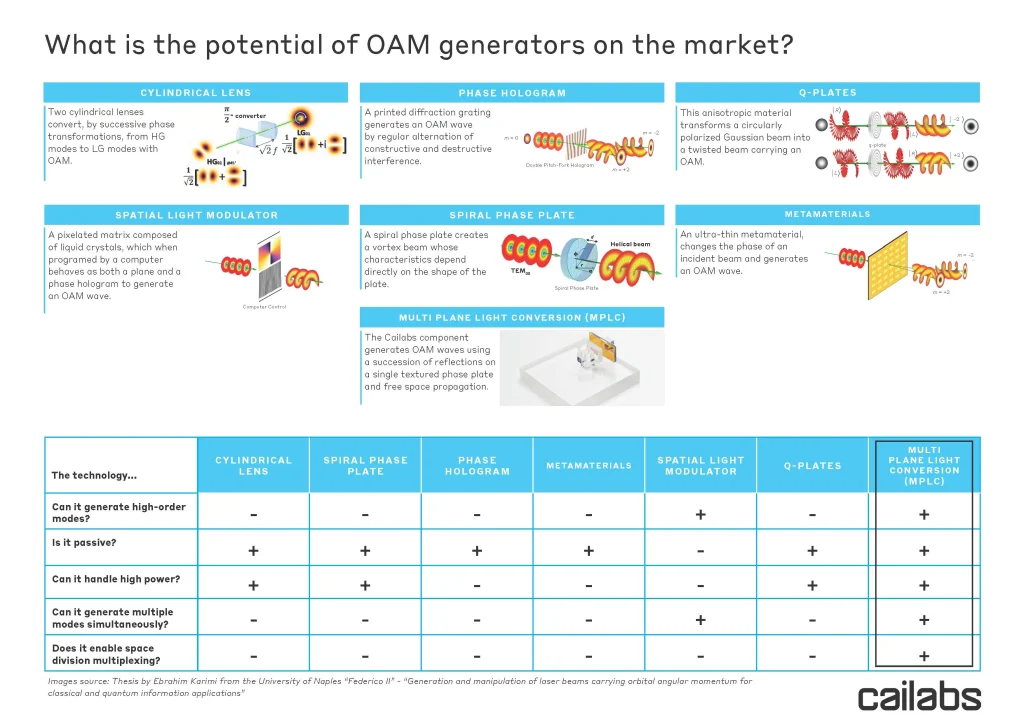
Conclusion
Today, OAM waves show great promise for the development of future means of communication, whether through optical fiber or in free space, both in terms of securing information and relieving congestion in networks that are increasingly limited by an ever-growing demand for data exchange.
The PROTEUS solution is a robust spatial mode multiplexer for use in Space Division Multiplexing (SDM). This unique solution is ideal for OAM generation as it leverages Cailabs’ Multi-Plane Light Conversion technology.
In addition to generating high-purity beams, it is also able to overcome all the constraints that hamper other technologies, while its reversible nature makes it the perfect system for decoding and re-reading this information. It is currently the only commercial solution that offers OAM space division multiplexing.
Bibliography :
(1) Long Li, Runzhou Zhang, Zhe Zhao, Guodong Xie &al – “High-Capacity Free-Space Optical Communications Between a Ground Transmitter and a Ground Receiver via a UAV Using Multiplexing of Multiple Orbital-Angular-Momentum Beams” – Read the article
(2) Cong Liu, Kai Pang, Yongxiong Ren, Jiapeng Zhao &al – “Demonstration of Adaptive Optics Compensation for Emulated Atmospheric Turbulence in a Two-Orbital-Angular-Momentum Encoded Free-Space Quantum Link at 10 Mbits/s” – Read the article
(3) Cong Liu, Kai Pang, Zhe Zhao, Peicheng Liao & al. – “Single-End Adaptive Optics Compensation for Emulated Turbulence in a Bi-Directional 10-Mbit/s per Channel Free-Space Quantum Communication Link Using Orbital-Angular-Momentum Encoding” – Read the article
(4) Rui Chen, Hong Zhou, Marco Moretti, Xiaodong Wang, and Jiandong Li – “Orbital Angular Momentum Waves: Generation, Detection and Emerging Applications” – Read the article
(images): “Angular Momentum of Light” – E. Karimi – Wikipedia

By Tangi Le Guennic
Tangi Le Guennic, who holds Master’s degrees in materials science and optics, is a project and product manager at Cailabs. Tangi has a strong experience in R&D in developing optical sensors for aircraft systems as well as in industrial vision project management. At Cailabs, he works on the development and commercialization of innovative optical solutions for PROTEUS and custom applications (defense, aeronautics, automotive, biomedical…).





